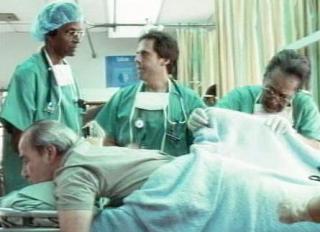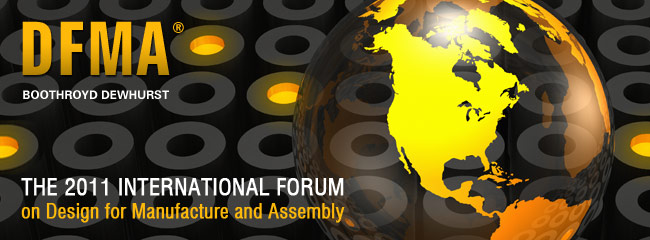Archive for the ‘Product Development’ Category
WHY, WHAT, HOW to Improve Engineering
 When asked how to improve manufacturing, the recipe is clear: lean. When asked how to improve engineering, the recipe: there isn’t one. Each engineering improvement effort is unique; though there are common themes and building blocks, each has its own fingerprint.
When asked how to improve manufacturing, the recipe is clear: lean. When asked how to improve engineering, the recipe: there isn’t one. Each engineering improvement effort is unique; though there are common themes and building blocks, each has its own fingerprint.
Each company has its own strengths, weaknesses, opportunities and threats; each company has unique products and markets; each its own goals; each its own culture; each its own future state. Informed by uniqueness, the recipe is unique. To create your unique improvement recipe, I suggest WHY, WHAT, HOW.
WHY
Before your engineering improvement recipe can be formed, the fundamental shaping question must be answered. Take a breath, fire up your laptop, put on your headphones, and queue up your best music. Type this question:
WHY does our business demand we improve engineering?
Now, type the answer. (Literally.) Use nouns and verbs to explain why engineering must improve. If you can’t, stop. Without a clear, concise, jargon-free answer nothing can be done to advance the cause. (Though there can be plenty of activity, there can be no progress.) Without the WHY, you cannot pass GO. You must create a clear, concise WHY.
Seek out help from trustworthy people to create the WHY. Don’t move forward until you understand it well enough to explain it to the engineering organization. Now, with WHY in place, it’s time for WHAT.
WHAT
Informed by WHY, it’s time for WHAT. Secure a quiet spot, scare up a big piece of paper, and grab your favorite pen. On the top of the page, write this question:
WHAT does engineering improvement look like?
Now, draw the picture. (Literally.) Use sketches, scribbles, arrows, blocks, and people’s names to describe what improved engineering looks like. Sit in the future and describe it in present tense. Once drawn, review it with folks you trust, revise it, and repeat. If you cannot draw the future, keep trying. Once you have something, review it with folks you trust, revise it, and repeat. Don’t move forward until you draw it clearly enough to explain it to the engineering organization. And with WHAT in place, it’s time for HOW.
HOW
The first step of HOW is similar to WHAT. Pick up your favorite pen, come back to the now, and draw a picture of today’s engineering capabilities, engineering’s current state. Again, use scribbles, blocks, arrows, and names.
The second step is to define the difference between future and current states. With future and current state pictures side-by-side, perform a mathematical subtraction: future state – current state. The difference is HOW. A block in future state that’s not part of the current state is a new thing that must be created; a new arrow in the future state is an activity, interaction, or relationship that must be created; a new person, named or unnamed, represents new thinking. Things that appear in both states are strengths to build on.
The third step, prioritization. Start here:
What engineering strengths will we build on?
It’s important start with strengths. It sends the right message to the engineering organization: we must build on build on what works, build on what got us here. Engineers need to know that, fundamentally, their work is good, and major building blocks are in place, the foundation is solid.
What development areas will we improve?
Take care with this one. To avoid a demoralized engineering team, there should be fewer development areas than strengths. Though there may be many development areas, call out only the most important.
What’s the right first bite?
The most important improvements are those that strongly support the WHY; there’s a natural sequence of things (socks before shoes) that must be respected; and there’s a finite amount of work that can be done. Use these three lenses as the start of a prioritization framework.
Building blocks for engineering improvement are the same for all companies: people, tools, and processes, but there are many types of people, countless engineering tools, and all processes can be improved. WHY, WHAT, HOW can help define your unique improvement fingerprint: the right people, the right tools, the right processes, shaped by your unique company goals, and improved in right sequence.
Engineering’s Contribution to the Profit Equation
 We all want to increase profits, but sometimes we get caught in the details and miss the big picture:
We all want to increase profits, but sometimes we get caught in the details and miss the big picture:
Profit = (Price – Cost) x Volume.
It’s a simple formula, but it provides a framework to focus on fundamentals. While all parts of the organization contribute to profit in their own way, engineering’s work has a surprisingly broad impact on the equation.
The market sets price, but engineering creates function, and improved function increases the price the market will pay. Design the product to do more, and do it better, and customers will pay more. What’s missing for engineering is an objective measure of what is good to the customer.
Secret Sauce that Doubles Profits
 Last month a group of engineers met secretly to reinvent the US economy one company at a time. Here are some of the players, maybe you’ve heard of them:
Last month a group of engineers met secretly to reinvent the US economy one company at a time. Here are some of the players, maybe you’ve heard of them:
Alcoa, BAE, Boeing, Bose, Covidien, EMC, GE Medical, GE Transportation, Grundfos, ITT, Medrad, Medtronic, Microsoft, Motorola, Pratt & Whitney, Raytheon, Samsung, Schneider Electric, Siemens, United Technologies, Westinghouse, Whirlpool.
Presenter after presenter the themes were the same: double profits, faster time to market, and better products – the triple crown of product development. Magic in a bottle, and still the best kept secret of the product development community. (No sense sharing the secret sauce when you can have it all for yourself.)
Microsoft used the secret sauce to increase profits of their hardware business by $75 million; Boeing recently elevated the secret methodology to the level of lean. Yet it’s still a secret.
What is this sauce that doubles profits without increasing sales? (That’s right, doubles.) What is this magic that decreases time to market? That reduces engineering documentation? That reduces design work itself? What is this growth strategy?
When trying to spread it on your company there are some obstacles, but the benefits should be enough to carry the day. First off, the secret sauce isn’t new, but double the profits should be enough to take a first bite. Second, its name doesn’t roll off the tongue (there’s no sizzle), but decreased time to market should justify a taste test. Last, design engineering must change its behavior (we don’t like to do that), but improved product functionality should be enough to convince engineering to swallow.
There are also two mapping problems: First, the sauce has been mapped to the wrong organization – instead of engineering it’s mapped to manufacturing, a group that, by definition, cannot do the work. (Only engineering can change the design.) Second, the sauce is mapped to the wrong word – instead of profit it’s mapped to cost. Engineering is praised for increased profits (higher function generates higher profits) and manufacturing is responsible for cost – those are the rules.
With double profits, reduced time to market, and improved product function, the name shouldn’t matter. But if you must know, its name is Design for Manufacturing and Assembly (DFMA), though I prefer to call it the secret sauce that doubles profits, reduces time to market, and improves product function.
It’s all about judgement.
 It’s high tide for innovation – innovate, innovate, innovate. Do it now; bring together the experts; hold an off-site brainstorm session; generate 106 ideas. Fast and easy; anyone can do that. Now the hard part: choose the projects to work on. Say no to most and yes to a few. Choose and execute.
It’s high tide for innovation – innovate, innovate, innovate. Do it now; bring together the experts; hold an off-site brainstorm session; generate 106 ideas. Fast and easy; anyone can do that. Now the hard part: choose the projects to work on. Say no to most and yes to a few. Choose and execute.
To choose we use processes to rank and prioritize; we assign scores 1-5 on multiple dimensions and multiply. Highest is best, pull the trigger, and go. Right? (Only if it was that easy.) Not how it goes.
After the first round of scoring we hold a never-ending series of debates over the rankings; we replace 5s with 3s and re-run the numbers; we replace 1s with 5s and re-re-run. We crank on Excel like the numbers are real, like 5 is really 5. Face it – the scores are arbitrary, dimensionless numbers, quasi-variables data based on judgment. Face it – we manipulate the numbers until the prioritization fits our judgment.
Clearly this is a game of judgment. There’s no data for new products, new technologies, and new markets (because they don’t exist), and the data you have doesn’t fit. (That’s why they call it new.) No market – the objective is to create it; no technology – same objective, yet we cloak our judgment in self-invented, quasi-variables data, and the masquerade doesn’t feel good. It would be a whole lot better if we openly acknowledged it’s judgment-based – smoother, faster, and more fun.
Instead of the 1-3-5 shuffle, try a story-based approach. Place the idea in the context of past, present, and future; tell a tale of evolution: the market used to be like this with a fundamental of that; it moved this way because of the other, I think. By natural extension (or better yet, unnatural), my judgment is the new market could be like this… (If you say will, that’s closeted 1-3-5 behavior.) While it’s the most probable market in my judgment, there is range of possible markets…
Tell a story through analogy: a similar technology started this way, which was based on a fundamental of that, and evolved to something like the other. By natural evolution (use TRIZ) my technical judgment is the technology could follow a similar line of evolution like this…. However, there are a range of possible evolutionary directions that it could follow, kind of like this or that.
And what’s the market size? As you know, we don’t sell any now. (No kidding we don’t sell any, we haven’t created the technology and the market does not exist. That’s what the project is about.) Some better questions: what could the market be? Judgment required. What could the technology be? Judgment. If the technology works, is the market sitting there under the dirt just waiting to be discovered? Judgment.
Like the archeologist, we must translate the hieroglyphs, analyze the old maps, and interpret the dead scrolls. We must use our instinct, experience, and judgment to choose where to dig.
Like it or not, it’s a judgment game, so make your best judgment, and dig like hell.
Pushing on Engineering
 With manufacturing change is easy – lean this, six sigma that, more with less year-on-year. With engineering, not so much. Why?
With manufacturing change is easy – lean this, six sigma that, more with less year-on-year. With engineering, not so much. Why?
Manufacturing is about cost, waste, efficiency, and yield (how to make it), and engineering is about function (what it does) – fundamental differences but not the why. The consequence of failure is the why. If manufacturing doesn’t deliver, the product is made like last year (with a bit more waste and cost than planned), but the product still sells. With engineering, not so much. If engineering mistakenly designs the Fris out of the Frisbee or the Hula out of the Hoop, no sales. That’s the why.
No function, no sales, no company, this is fear. This is why it feels dangerous to push on engineering; push on engineering and the wheels may fall off. This why the organization treads lightly; this is why the CEO does not push.
As technical leaders we are the ones who push directly on engineers. We stretch them to create novel technology that creates customer value and drive sales. (If, of course, customers value the technology.) We spend our days in the domain of stress, strain, printed circuit boards, programming languages, thermal models, and egos. As technologists, it’s daunting to push effectively on engineering; as non-technologists even more. How can a CEO do it without the subject matter expertise? The answer is one-page thinking.
One-page thinking forces engineers to describe our work in plain English, simple English, simple language, pictures, images. This cuts clutter and cleans our thinking so non-technologists can understand what’s happening, what’s going on, what we’re thinking, and shape us in the direction of customer, of market, of sales. The result is a hybrid of strong technology, strong technical thinking, and strong product, all with a customer focus, a market focus. A winning combination.
There are several rules to one-page thinking, but start with this one:
Use one page.
As CEO, ask your technical leaders (even the VP or SVP kind) to define each of their product development (or technology) projects on one page, but don’t tell them how. (The struggle creates learning.) When they come back with fifteen PowerPoint slides (a nice reduction from fifty), read just the first one, and send them away. When they come back with five, just read the first. They’ll get the idea. But be patient. To use just one page makes things remarkably clear, but it’s remarkably difficult.
Once the new product (or technology) is defined on one page, it’s time to reduce the fear of pushing on engineering – one-page thinking at the problem level. First, ask the technical leaders for a one-page description of each problem that must be overcome (one page per problem and address only the fundamental problems). Next, for each problem ask for baseline data (test data) on the product you make today. (For each problem they’ll likely have to create a robustness surrogate, a test rig to evaluate product performance.) The problem is solved (and the product will function well) when the new one out-performs the old one. The fear is gone.
When your engineers don’t understand, they can’t explain things on one page. But when they can, you understand.
Improve the US economy, one company at a time.
 I think we can turn around the US economy, one company at a time. Here’s how:
I think we can turn around the US economy, one company at a time. Here’s how:
To start, we must make a couple commitments to ourselves. 1. We will do what it takes to manufacture products in the US because it’s right for the country. 2. We will be more profitable because of it.
Next, we will set up a meeting with our engineering community, and we will tell them about the two commitments. (We will wear earplugs because the cheering will be overwhelming.) Then, we will throw down the gauntlet; we will tell them that, going forward, it’s no longer acceptable to design products as before, that going forward the mantra is: half the cost, half the parts, half the time. Then we will describe the plan.
On the next new product we will define cost, part count, and assembly time goals 50% less that the existing product; we will train the team on DFMA; we will tear apart the existing product and use the toolset; we will learn where the cost is (so we can design it out); we will learn where the parts are (so we can design them out); we will learn where the assembly time is (so we can design it out).
On the next new product we will front load the engineering work; we will spend the needed time to do the up-front thinking; we will analyze; we will examine; we will weigh options; we will understand our designs. This time we will not just talk about the right work, this time we will do it.
On the next new product we will use our design reviews to hold ourselves accountable to the 50% reductions, to the investment in DFMA tools, to the training plan, to the front-loaded engineering work, to our commitment to our profitability and our country.
On the next new product we will celebrate the success of improved product functionality, improved product robustness, a tighter, more predictable supply chain, increased sales, increased profits, and increased US manufacturing jobs.
On the next new product we will do what it takes to manufacture products in the US because it’s the right thing for the country, and we will be more profitable because of it.
If you’d like some help improving the US economy one company at a time, send me an email (mike@shipulski.com), and I’ll help you put a plan together.
a
p.s. I’m holding a half-day workshop on how to implement systematic cost savings through product design on June 13 in Providence RI as part of the International Forum on DFMA — here’s the link. I hope to see you there.
I can name that tune in three notes.
 More with more doesn’t cut it anymore, just not good enough.
More with more doesn’t cut it anymore, just not good enough.
The behavior we’re looking for can be nicely described by the old TV game show Name That Tune, where two contestants competed to guess the name of a song with the fewest notes. They were read a clue that described a song, and ratcheted down the notes needed to guess it. Here’s the nugget: they challenged themselves to do more with less, they were excited to do more with less, they were rewarded when they did more with less. The smartest, most knowledgeable contestants needed fewer notes. Let me say that again – the best contestants used the fewest notes.
In product design, the number of notes is analogous to part count, but the similarities end there. Those that use the fewest are not considered our best or our most knowledgeable, they’re not rewarded for their work, and our organizations don’t create excitement or a sense of challenge around using the fewest.
For other work, the number of notes is analogous to complexity. Acknowledge those that use the fewest, because their impact ripples through your company, and makes all your work easier.
Pull the product lever, now.
 If you’re reading this you’ve probably survived the great recession. You had to do some radical stuff, but you pulled it off. You cut to the bone as demand fell off, but you managed to shed staff and capacity and kept your company alive. Congratulations. Amazing work. But now the hard part: increased demand!
If you’re reading this you’ve probably survived the great recession. You had to do some radical stuff, but you pulled it off. You cut to the bone as demand fell off, but you managed to shed staff and capacity and kept your company alive. Congratulations. Amazing work. But now the hard part: increased demand!
Customers are ordering, and they want product now. You’re bringing on capacity, re-hiring, and re-training, and taking waste out of your processes with lean and even extending lean to your supply chain and logistics. You’re pulling the levers as hard as you can, but you know it won’t be enough. What you need is another lever, a big, powerful, magical lever to make everything better. You need to pull the product lever.
So, you’re telling me to look at my product as a way to meet increased demand? Yes. To get more products out of few factories? Yes. To make more products with a short staff? Yes. To reduce supply chain complexity? Yes. Pull the product lever, pull it hard, and pull it now.
But meeting increased demand is a manufacturing/supply chain problem, right? No. What about flogging suppliers for unreasonably short lead times? No. What about quickly bringing on unproven suppliers? No. What about bringing on a totally new factory by next week? No. What about using folks of the street to make the product? No. Pull the product lever, pull hard, and pull it now.
Dust off the value stream map of your supply chain and identify the three longest lead times, and design them out of your product. Dust off your routings and identify the three largest labor times, and design them out of our product. Dust off your BOMs and identify the three highest cost parts, and design them out of your product. Pull the product lever. Then, identify the next three, and pull it again. Then repeat. Pull it hard, and pull it now.
Meeting increased demand will be challenging, but your customers and stockholders deserve your best. So, pull hard on all your levers, and pull them now.
Money out the wazoo
 There’s a huge untapped source of profits out there – a virtual gold mine – with profit opportunities so large you can’t see them, and if you do see them, too large to believe. These profits larger than you’ve achieved with your traditional lean work. (Actually, what I’m talking about the next evolution of lean.) Want to see what I’m talking about? Go to your factory and watch. The gold mine will be hiding in plain sight – it’s your product.
There’s a huge untapped source of profits out there – a virtual gold mine – with profit opportunities so large you can’t see them, and if you do see them, too large to believe. These profits larger than you’ve achieved with your traditional lean work. (Actually, what I’m talking about the next evolution of lean.) Want to see what I’m talking about? Go to your factory and watch. The gold mine will be hiding in plain sight – it’s your product.
Huge savings blah, blah, blah. How significant? Here’s the formula:
material cost x volume x 50%.
Now, for your highest volume product, do the calculation. Go ahead. Do it. Humor me. It’s worth it.
Go get your best pen, and calculate by hand. Write down the number. Go ahead. Write it down, but make sure you put the dollar sign in front, and, please, put in the commas. Don’t abbreviate thousands, millions, or billions (or trillions, Mr. Gates) – write the zeros. All of them.
There. You did it. Not so hard. Now, sit quietly, and contemplate the number. Look at it for an hour. Don’t say anything, just sit with it.
Now, get bigger piece of paper, and re-run the calculation, but this time write big. Repeat with a poster board, and finish with your biggest whiteboard – big zeros, lot’s of them. (Don’t forget the commas.) Marinate for an hour. Don’t say anything, just sit.
Now that you appreciate the significance of the number, go make something happen. If you’re a CEO, tell your engineering leader to do DFMA; if you’re the manufacturing leader, grab your engineering leader by the ear, and walk to the whiteboard; if you’re the engineering leader, do DFMA.
You likely don’t believe the number. I know. It’s okay. But, a number that big at least deserves a Google search: save 50% with DFMA.
Upcoming Workshop on Systematic DFMA Deployment
 I will be running a half-day workshop on Systematic DFMA Deployment on June 13 in Providence, RI. The workshop will kick of BDI’s 2011 International Forum on Design for Manufacturing and Assembly and will focus on how to incorporate DFMA into your product development process.
I will be running a half-day workshop on Systematic DFMA Deployment on June 13 in Providence, RI. The workshop will kick of BDI’s 2011 International Forum on Design for Manufacturing and Assembly and will focus on how to incorporate DFMA into your product development process.
The Forum (June 14, 15) is the yearly gathering of the world’s leading DFMA experts. It is THE place to learn about DFMA and see examples and results from leading companies.
I urge the product development community to attend.
I am also presenting at the Forum and hope to finally meet you in person.
Declare Success
 All projects are successful; it’s just a matter of choosing what to declare. Here are some good choices:
All projects are successful; it’s just a matter of choosing what to declare. Here are some good choices:
- Success – We know when a project is too big. Going forward, let’s do smaller ones.
- Success – We know we can run too many projects concurrently. Going forward, let’s do fewer and get more done.
- Success – We know we can’t make that in-house. Going forward, let’s find a suppler with world class capability.
- Success – We know the consequences of going too quickly. Going forward, let’s take our time and get it right.
- Success – We know what customers won’t buy. Going forward, let’s know if they’ll buy it before we make it.
- Success – We know the consequences of going too slowly. Going forward, let’s be more efficient and launch sooner.
- Success – We know when quality levels are too low. Going forward, let’s launch with higher quality.
- Success – We know we can’t outsource that. Going forward, let’s make it in-house.
- Success – We know the attributes of a bad project manager. Going forward, let’s hire one that knows how to run projects.
Celebrate the learning, incorporate it in your go-forward plan, and go forward. Success.
 Mike Shipulski
Mike Shipulski